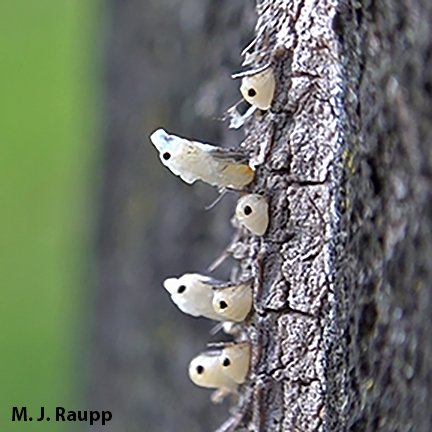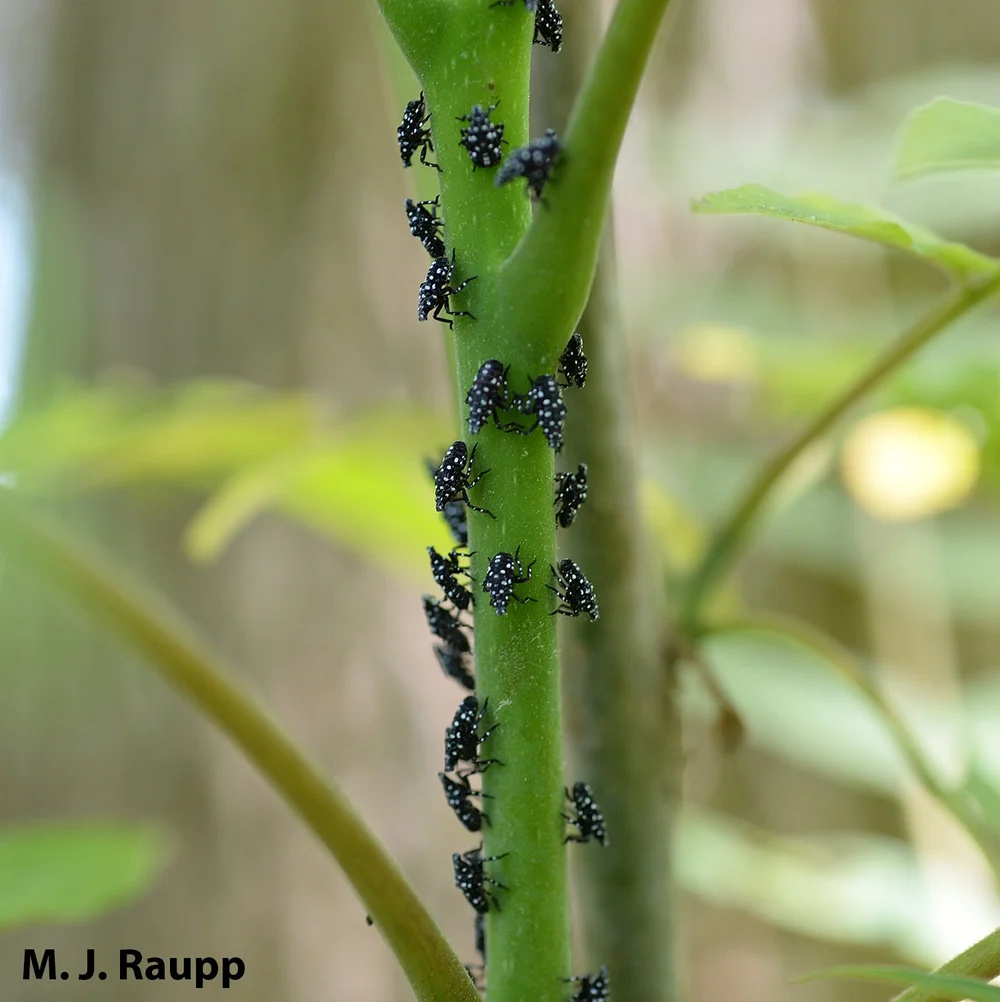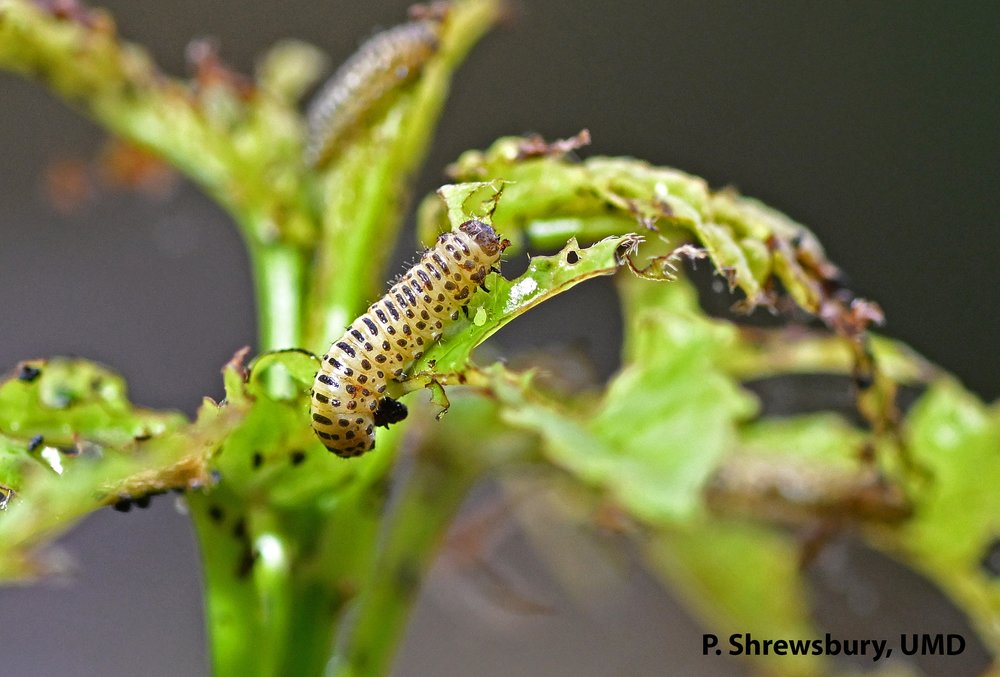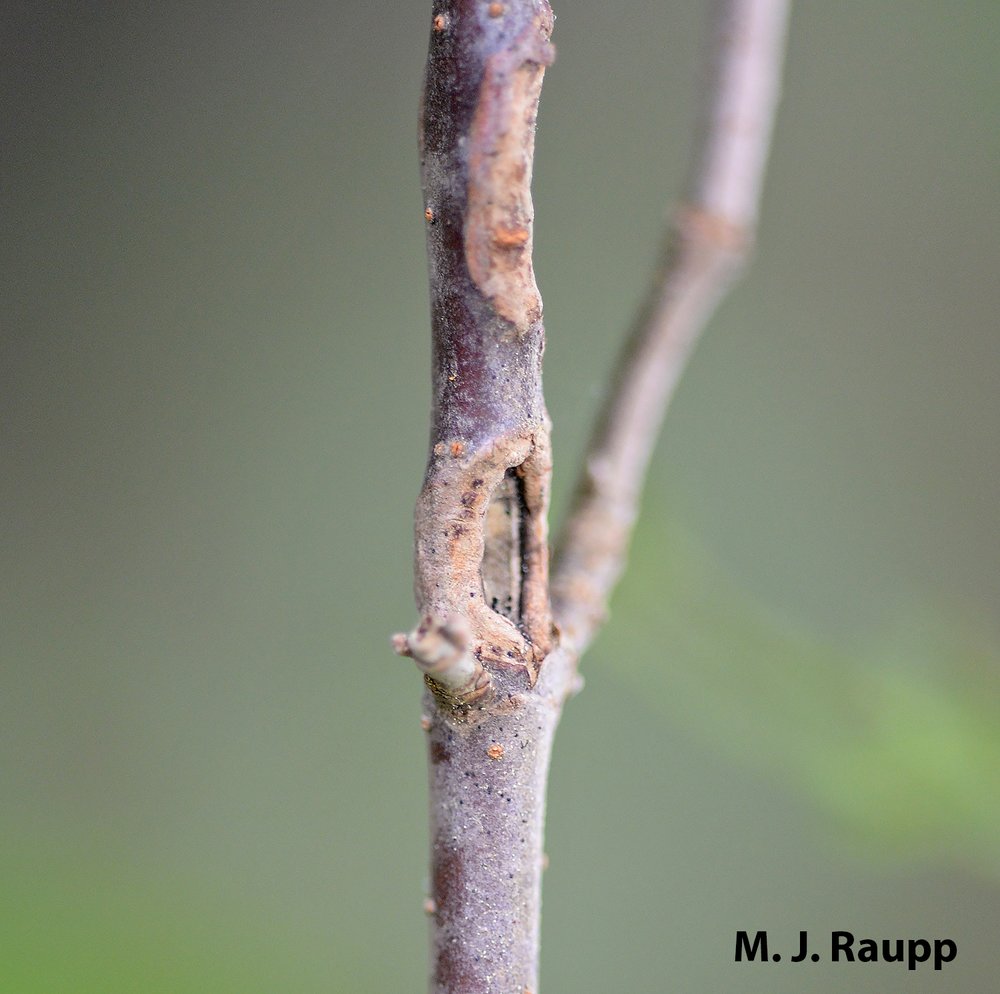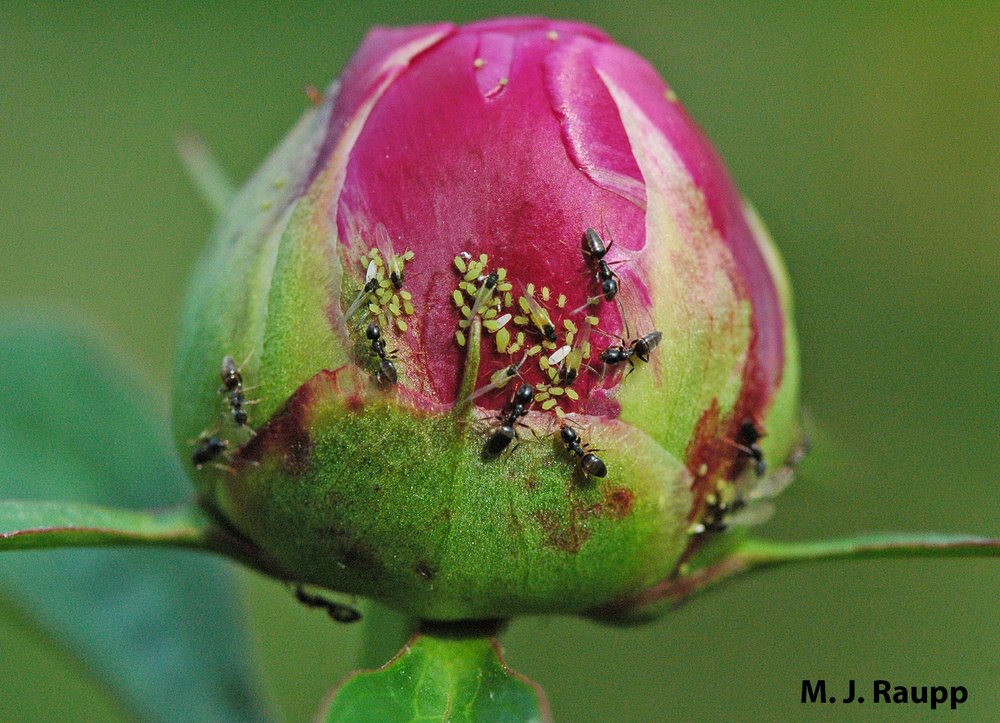
This white waxy creature is no pest. It is the larva of a Hyperaspis lady beetle, destroyer of dastardly crapemyrtle bark scale.
In a previous episode we met the invasive crapemyrtle bark scale, a dastardly sucking insect new to the DMV that wreaks havoc on our widely planted crapemyrtles. Populations of this eruptive pest reach fantastic densities on the bark of these flowering trees. As thousands of probing mouthparts remove plant sap, branches of crapemyrtle wither and die. Prodigious volumes of sweet sticky honeydew excreted by the bark scale rain down on leaves and bark of infested plants and coat underlying vegetation and objects. Carbohydrate rich honeydew serves as a medium for the growth of black sooty mold fungus which reduces the photosynthetic capacity of fouled plants. Even more problematic are the yellow jackets, paper wasps, and other stinging insects that are attracted to the honeydew.
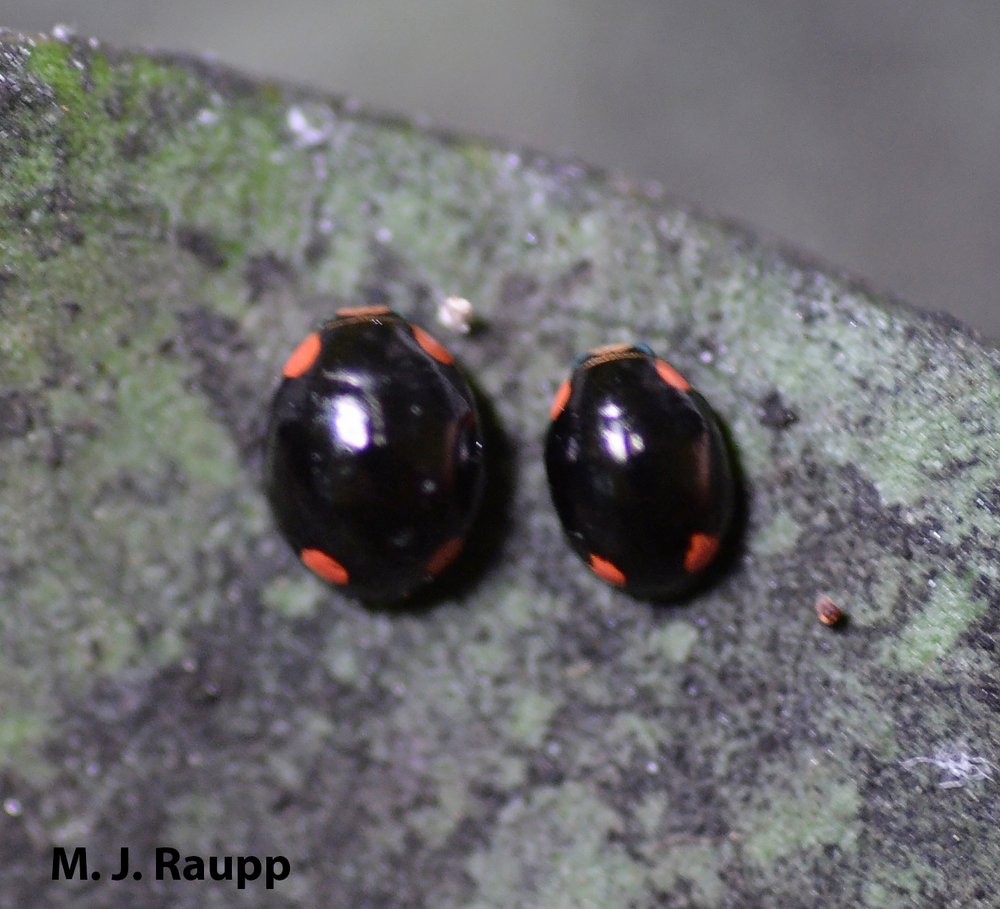
Adult Hyperaspis beetles will continue the carnage of crapemyrtle bark scales.
Ah, but there are heroes in this story and one such natural enemy of scales insects in general and crapemyrtle bark scale in particular are small black and red-spotted lady beetles known as Hyperaspis. Several species of Hyperaspis are native to North America and many specialize at making meals of scale insects and their eggs, which are deposited in waxy egg sacs like those of the crapemyrtle bark scale. Larvae of Hyperaspis look much more like a mealybug than the fierce predators that they are. Cases of mistaken identity surround this predator insect and many of these fine beneficial insects are misidentified and mistakenly killed. The larva of Hyperaspis produces wax from glands lining its sides. This wax is more than a way to be styling. Studies of related species of waxy lady beetles reveal that the wax reduces the effectiveness of ants and other predators that might like to make a meal of a lady beetle larva. In this way, the wax serves much like the cloak of trash carrying lacewing larvae we met in a previous episode. One fairly easy way to distinguish the larva of this beneficial ladybug from pesky mealybugs is to give it a little poke in the behind. Mealybugs tend to stay in one place and move slowly. Ladybug larvae usually amble away quickly when disturbed.
Honeydew, sooty mold, and white waxy egg sacs full of pink eggs are hallmarks of dastardly crapemyrtle bark scales. But native heroes are on the scene, the larvae of lady beetles called Hyperaspis, wearing cloaks of white wax. See these two parked near egg sacs of the scale. What are they up to? Through the lens of the microscope, watch as one chews a hole in the egg sac, thrusts its head inside and gobbles up eggs, and then when finished, leaves to find another meal. After completing larval development and pupating, adults will return to the scale hunting ground to continue their carnage of crapemyrtle bark scales. You go Hyperaspis!
Hordes of waxy larvae may eat several thousand immature scale insects during the course of development and the adult beetles consume many harmful scales too. Later in summer, Hyperaspis larvae complete development and become adults. Although the larvae of Hyperaspis are somewhat hard to recognize as good guys, adult beetles are easily recognized. The ones we met in this episode are gorgeous shiny black beetles with four red spots adorning their wing covers. Some species of Hyperaspis have fewer spots or bear combinations of yellowish spots or stripes on their back. By early December, adults have departed scale-infested trees to spend the winter in protected locations beneath bark or in leaf litter on the ground. Next spring, they will return to scale-infested trees and lay eggs that will hatch into stealthy, wax-cloaked larvae. Keep an eye out for these small masters of disguise and when you see them, do not spray them with insecticides. They are working for you!
Acknowledgements
The fascinating article “Hyperaspis Lady Beetles” by James Baker was consulted to prepare this episode. Thanks to Dr. Shrewsbury for help wrangling lady beetles.

